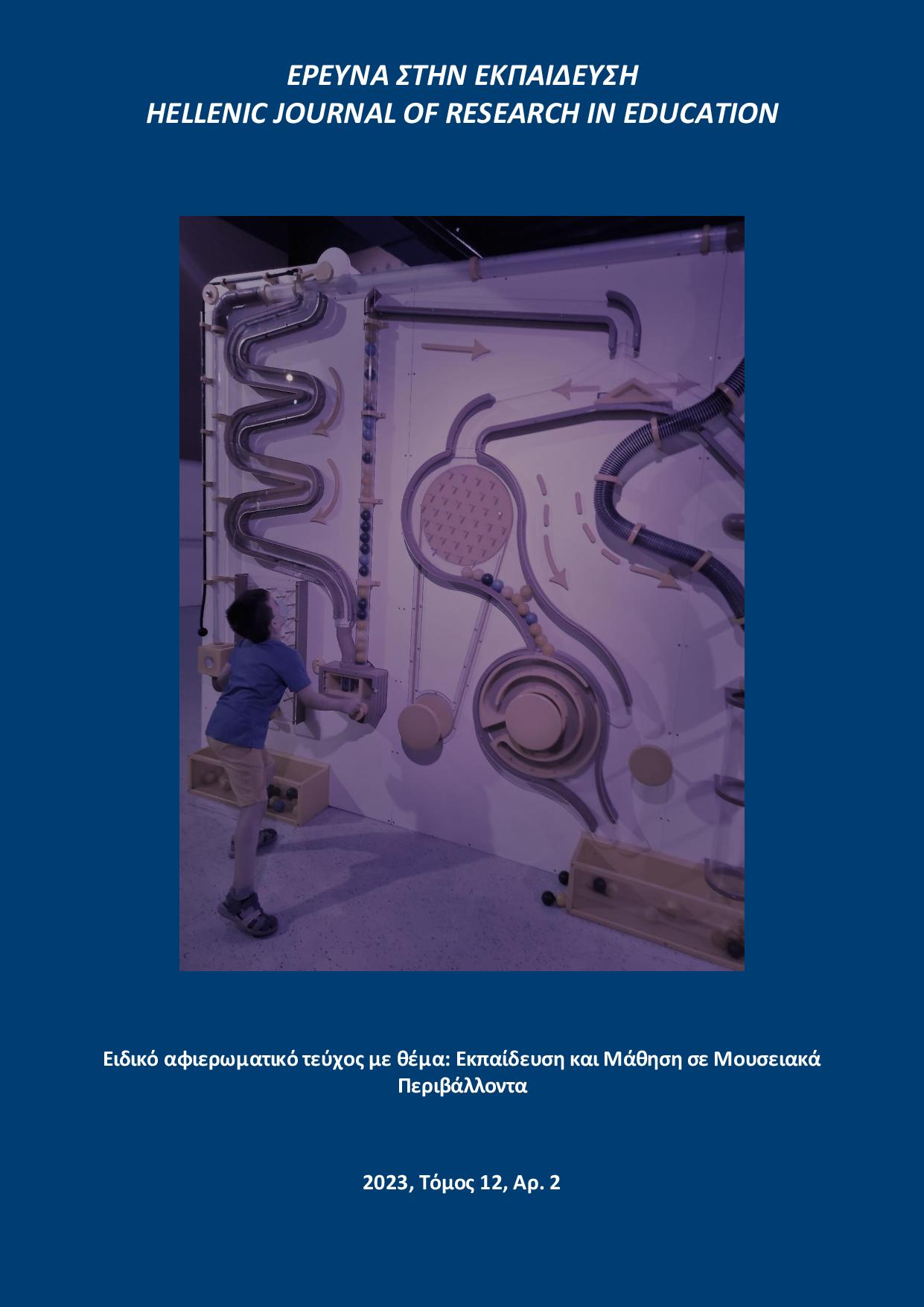Museum learning in the post-Covid era: Αn educational programme on the occasion of the exhibition of Aphrodite Liti at Τhe Environment Museum of Stymphalia

Abstract
The educational dimension, a parameter that has always been interwoven with the function of the museum, is modified on the basis of the scientific data of each era, relevant to knowledge and learning. In the context of the museum's democratisation, inclusion, i.e. care for all visitors and links with diverse groups of the public, has been cultivated. The article deals with the design, description and evaluation of an educational programme for children, which was designed on the occasion of the temporary exhibition "Untamed Nature", by Aphrodite Liti, at the The Environment Museum of Stymphalia, which belongs to the Museum Network of the Piraeus Bank Group Cultural Foundation. The programme was designed based on contemporary theories of museum learning, especially learning through objects, the theory of multiple types of intelligence and the effects of general learning. The aforementioned programme is an integrated, interdisciplinary approach to enhancing young people's understanding of cultural heritage, based on experiential learning and modern pedagogical approaches that prioritise the subjects (learners) rather than the object of learning. The programme, differentiated, addressed two groups underrepresented in Museum Learning, toddlers and adolescents, groups with common characteristics of an increased need for active participation, especially after the pandemic, socialisation and freedom of expression. In kindergarten children, the evaluation was conducted through participant observation and distribution of questionnaires to teachers. In middle school students, the evaluation was conducted through participatory observation and distribution of questionnaires to students and teachers. The interesting point is that, based on the evaluation, it appears that Museum Learning should focus less on the breadth of knowledge and more on cultivating empathy. And of course, we should try to say less and listen more to museum visitors, especially those of young and very young age, as in the modern, 'reinvented' museum, as well as in Museum Learning, with its human-centred character, the visitors and the subjects of learning have priority.
Article Details
- How to Cite
-
Tranta, A., & Lapourtas, A. (2023). Museum learning in the post-Covid era:: Αn educational programme on the occasion of the exhibition of Aphrodite Liti at Τhe Environment Museum of Stymphalia. Hellenic Journal of Research in Education, 12(2), 32–50. https://doi.org/10.12681/hjre.33624
- Section
- Articles

This work is licensed under a Creative Commons Attribution-NonCommercial-ShareAlike 4.0 International License.
Authors who publish with this journal agree to the following terms:
- Authors retain copyright and grant the journal right of first publication with the work simultaneously licensed under a CC-BY-NC-SA that allows others to share the work with an acknowledgement of the work's authorship and initial publication in this journal.
- Authors are able to enter into separate, additional contractual arrangements for the non-exclusive distribution of the journal's published version of the work (e.g. post it to an institutional repository or publish it in a book), with an acknowledgement of its initial publication in this journal.
- Authors are permitted and encouraged to post their work online (preferably in institutional repositories or on their website) prior to and during the submission process, as it can lead to productive exchanges, as well as earlier and greater citation of published work (See The Effect of Open Access).


